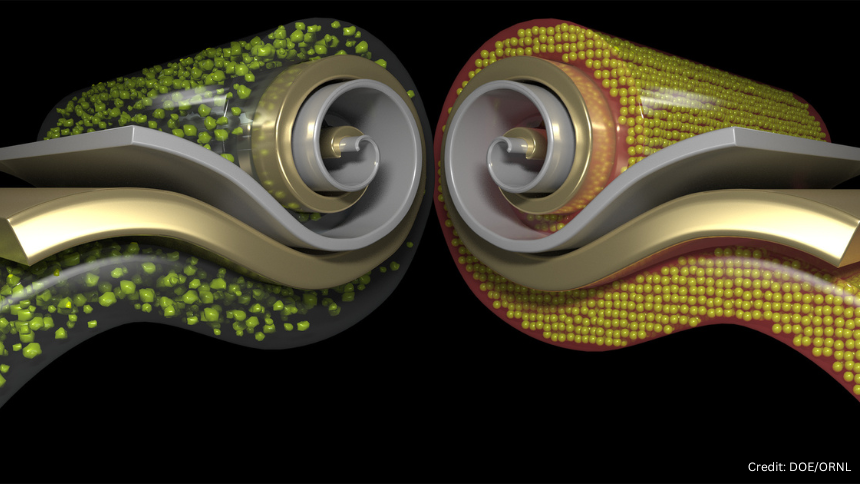
ORNL researchers develop new way to produce key component of lithium-ion batteries
Have you ever thought how important lithium-ion batteries have become to your everyday life? After all, they power everything from household appliances to cell phones and electric vehicles.
Oak Ridge National Laboratory researchers have developed a new method for producing a key component of lithium-ion batteries that results in a more affordable battery from a faster, less wasteful process that uses less toxic material.
Our technology savvy readers no doubt know that lithium-ion batteries are composed of a cathode and an anode with an electrolyte in between. Ions move from anode to cathode through the electrolyte in a reaction that converts chemical energy to electrical energy.
The drive toward decarbonization and the demand for electric cars has increased the focus on sustainably producing energy-dense cathodes. However, traditional processing presents challenges.
The first obstacle is a reliance on cobalt, a rare metal mined and refined abroad. This dependence on foreign sources poses risks to American manufacturing supply chains and transportation infrastructure.
The availability of cobalt is not the only complication. The balance of other metals common in cathodes can also make the manufacturing process longer and more hazardous. For example, high nickel concentration has led to the widespread use of a chemical mixing method for cathode production that requires large quantities of ammonia for corrosive reactions. Using the toxic chemical increases costs, heightens health and environmental concerns, and wastes large amounts of water to reduce acidity.
ORNL researchers report in the Journal of Power Sources that they have developed a cleaner, cheaper, more efficient method for making a new class of high-capacity cathode material without cobalt. Instead of continuously stirring cathode materials with chemicals in a reactor, their hydrothermal synthesis approach crystalizes the cathode using metals dissolved in ethanol. The ethanol is safer to store and handle than ammonia, and afterward it can be distilled and reused.
To learn more about their work, click here.
Like what you've read?
Forward to a friend!

